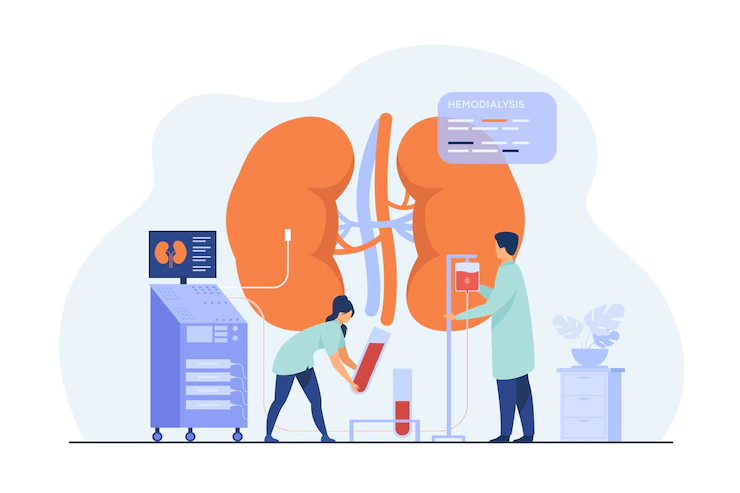The end-stage renal disease is a condition where the person loses the full functioning of both their kidneys. As soon as a person loses their kidney function, it becomes a life-threatening situation due to the severe symptoms that the patient has to go through.
Patients with end-stage renal disease often have a debate within themselves when the doctors suggest the treatment options that is available.
It is more fatal than you can ever imagine. But thankfully, there are some treatments available for these patients to bring them out of their pain and suffering.
But both the treatment has their ban and boon, so here is the list of information about both the treatments for renal patients:
Symptoms of ESRD Patients
Early symptoms of ESRD include nausea and vomiting often. People will lose their appetite and will be feeling weak or exhausted all the time. You will notice changes in your urination pattern. After some time, there will be recurring chest pain due to heavy fluid buildup inside the body and in the surroundings of the heart.
If that happens, then there will be difficulties in breathing due to the accumulation of bodily fluid around the lungs. And this will lead you to stack watery fluid in many parts of the body, including the feet and ankles, due to the lack of urination.
If there is no urine output in the body, there will be a severe disturbance in the homeostasis, which keeps the fluids level in balance. And when your urine is not eliminated from the body, the toxic waste substance present in it gets back into the blood circulation. This is where treatment is required to save the patient from so much pain. The patient may also undergo an MRI scan and other medical tests to confirm the diagnosis.
Is Kidney Transplant the Final Solution?
A kidney transplant surgery is considered best for people with severe chronic kidney disease. It is due to the quality of life that will become normal right after the patient’s recovery from the surgery period.
The life expectancy of the people who have undergone kidney transplantation is often better than people who are treated with regular dialysis.
The donated kidney must pass the test to reveal its compatibility with the recipient who will receive the kidney.
Due to the complex nature of the surgery, the Kidney transplant cost is high, so it will be hard to afford for people with a lower economic state.
After these procedures, the body’s immune system has the tendency to reject the newly transplanted kidney. If it happens, there is a greater chance of risk that the whole surgery will be of no use.
But until they receive the donor, the patient should undergo temporary dialysis to sustain their life. They cannot live without any medical assistance and another individual’s help until they receive a transplant and retrieve their normal lifestyle back.
But once it is successful, the patient can live a normal life after recovering from surgery. And the best part is you will not require any medical assistance, and you don’t have to depend on anyone to lead a healthy lifestyle. You can live without any diet restrictions after that.
Kidney Transplantation Process
It is approximately a three-hour procedure that involves implanting the kidney inside the patient’s pelvis. After implanting, they will attach the kidney to the patient’s blood vessels and the urinary tract of the patient. But unfortunately, if kidney transplant surgery fails, then patients have to rely on dialysis once and for all.
Dialysis
Dialysis is not a cure for the patient, it is a treatment that will help the patient to sustain their life expectancy a little longer. But it involves a lot of patience, self-control, and consistency from the patient’s side. The patient can live a peaceful life even if their quality of life is minimized to an extent.
Dialysis procedure
With the help dialysis machine, the doctors resume the normal procedure of blood circulation in the body as an artificial kidney. The dialysis involves creating an access point in the veins of the blood vessels to withdraw blood from it freely without any restrictions.
There are numerous variants of access points, such as Arteriovenous fistula, Arteriovenous graft, and temporary catheter access. After creating one of these accesses, they will use a dialysis machine with the specific variant relevant to their treatment.
The arteriovenous fistula involves bounding two healthy veins together, letting them heal, and then using them for the dialysis procedure. Whereas, in the arteriovenous graft, they will attach a small tube that connects the artery and a vein.
The doctors will insert a needle and will withdraw the blood from your body, running through the dialysis machine. Then the machine cleans the toxic and harmful substances present in your blood. It takes around 2-5 hours to complete the dialysis according to the patient’s lid levels.
A dialysis session should be taken twice or thrice a week according to doctor recommendations. Each dialysis session takes almost 4 hours to complete.
Patients are advised to follow a strict diet plan and water intake and are completely banned from lifting heavy weights from the fistula arm.
Various types of dialysis are available in practice which can be prescribed by the doctor, rendering to the patient’s requirement and comfortability. The patient should undergo this till their last breath.
Final Verdict
Even though there are various modalities of treatment that are available for end-stage patients, it is considered to be very painful. It takes the rest of their life to undergo this treatment recurrently, and they have to go through a lot to keep them stable.
So, it would be best if you can get a transplant unless or until there is no kidney rejection. With that, you can return to the normal lifestyle, but you have to wait until you get a perfect kidney donor, which is not easily affordable.


